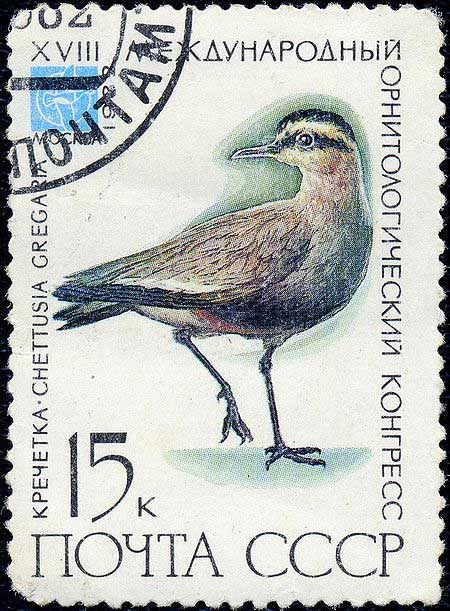Superregnum: Eukaryota
Regnum: Animalia
Subregnum: Eumetazoa
Cladus: Bilateria
Cladus: Nephrozoa
Superphylum: Deuterostomia
Phylum: Chordata
Cladus: Craniata
Subphylum: Vertebrata
Infraphylum: Gnathostomata
Superclassis: Tetrapoda
Cladus: Reptiliomorpha
Cladus: Amniota
Classis: Reptilia
Cladus: Eureptilia
Cladus: Romeriida
Subclassis: Diapsida
Cladus: Sauria
Infraclassis: Archosauromorpha
Cladus: Crurotarsi
Divisio: Archosauria
Subsectio: Ornithodira
Subtaxon: Dinosauromorpha
Cladus: Dinosauria
Ordo: Saurischia
Cladus: Eusaurischia
Cladus: Theropoda
Cladus: Neotheropoda
Infraclassis: Aves
Cladus: Euavialae
Cladus: Avebrevicauda
Cladus: Pygostylia
Cladus: Ornithothoraces
Cladus: Euornithes
Cladus: Ornithuromorpha
Cladus: Ornithurae
Cladus: Carinatae
Parvclassis: Neornithes
Cohors: Neognathae
Ordo: Charadriiformes
Subordo: Charadrii
Familia: Charadriidae
Genus: Vanellus
Species: Vanellus gregarius
Name
Vanellus gregarius (Pallas, 1771: 456)
Synonyms
Charadrius gregarius (protonym)
Chettusia gregaria
References
Pallas, P. S. (1771). Reise durch verschiedene Provinzen des Rußischen Reichs. Erster Theil. - pp. [1-12], 1-504, Tab. I-XI [= 1-11], Tab. A-L. St. Petersburg. (Kayserliche Academie der Wissenschaften). Title page, Original description: p. 456
Watson, M., Wilson, J. M., Koshkin, M., Sherbakov, B., Karpov, F., Gavrilov, A., Schielzeth, H., Brombacher, M., Collar, N.J., & Cresswell, W. (2006). Nest survival and productivity of the critically endangered Sociable Lapwing Vanellus gregarius. Ibis 148: 489–502.
Sheldon, R. D., Kamp, J., Koshkin, M. A., Urazaliev, R. S., Iskakov, T. K., Field, R. H., Salemgareev, A. R., Khrokov, V. V., Zhuly, V. A., Sklyarenko, S. L., & Donald, P. F. (2013). Breeding ecology of the globally threatened Sociable Lapwing Vanellus gregarius and the demographic drivers of recent declines. Journal of Ornithology 154 (2): 501–516.
Morozov, V. V., & Kornev, S. V. (2005). Survey of the Sociable Plover Vanellus gregarius in the South Urals, May 2005. Wader Study Group Bulletin 108: 27.
Kamp, J., Sheldon, R. D., Koshkin, M. A., Donald, P. F., & Biedermann, R. (2009). Post-Soviet steppe management causes pronounced synanthropy in the globally threatened Sociable Lapwing Vanellus gregarius. Ibis 151: 452–463.
IUCN: Vanellus gregarius (Critically Endangered)
Vernacular names
العربية: الزقزاق الأنيس
azərbaycanca: Çığırğan cüllüt
български: Степна калугерица
brezhoneg: Kornigell-stepenn
català: Corriol pit-roig
čeština: Keptuška stepní
Cymraeg: Cwtiad heidiol
dansk: Steppevibe
Deutsch: Steppenkiebitz
Ελληνικά: Στεπογιαννής
English: Sociable Lapwing
Esperanto: Stepvanelo
español: Avefría Sociable
eesti: Stepikiivitaja
euskara: Fredeluga gregària
suomi: Arohyyppä
føroyskt: Sandvípa
français: Vanneau sociable
Frysk: Steppeljip
Gaeilge: Pilibín Ealtúil
galego: Avefría sociable
עברית: קוית להקנית
magyar: Lilebíbic
հայերեն: Ճախրուկ
íslenska: Steppuvepja
italiano: Pavoncella gregaria
日本語: マミヒロゲリ
ქართული: ველის პრანწია
қазақша: Тарғақ
Lëtzebuergesch: Steppepiwitsch
lietuvių: Stepinė pempė
монгол: Хээрийн хавтгалж, ᠬᠡᠬᠡᠷᠠ ᠶᠢᠨ ᠬᠠᠪᠲᠠᠭᠠᠯᠵᠢ
Malti: Venewwa tal-Qtajja'
नेपाली: वेनेल्लुस ग्रेगारिउस
Nederlands: Steppekievit
norsk: Steppevipe
polski: Czajka towarzyska
português: Abibe-sociável
rumantsch: Vanel da rotscha
română: Nagâț de stepă
русский: Кречётка
slovenčina: Cíbik stepný
slovenščina: Stepska priba
svenska: Stäppvipa
Türkçe: Sürmeli kız kuşu
українська: Кречітка
中文: 黄颊麦鸡
The specific gregarius is Latin for "sociable" from grex, gregis, "flock".[2]

Vanellus gregarius
The sociable lapwing or sociable plover (Vanellus gregarius) is a critically endangered wader in the lapwing family of birds. The genus name is Medieval Latin for a lapwing and derives from vannus a winnowing fan. The specific gregarius is Latin for "sociable" from grex, gregis, "flock".[2]
Description
This medium-sized lapwing has longish black legs and a short black bill. Summer adults have grey backs and breast, dark belly and white undertail. The head has a striking pattern, with a black crown and eyestripe, the latter being bordered above and below with white. The upper neck is ochre. Its longish black legs, white tail with a black terminal band and distinctive brown, white and grey wings make it almost unmistakable in flight. Length is 27–30 cm (11–12 in). The call is a harsh kereck.
Winter adults have a less distinct head pattern, slightly browner back and breast, and white belly. Young birds have a scaly back and only traces of the head pattern.
Egg - MHNT
Distribution and habitat
This species breeds on open grassland in Russia and Kazakhstan. Three to four eggs are laid in a ground nest. These birds migrate south through Kyrgyzstan, Tajikistan, Uzbekistan, Turkmenistan, Afghanistan, Armenia, Iran, Iraq, Saudi Arabia, Syria and Turkey, to key wintering sites in Israel, Syria, Eritrea, Sudan and north-west India. Birds winter occasionally in Pakistan, Sri Lanka and Oman. It is a very rare vagrant in western and northern Europe, where this gregarious bird is usually found with northern lapwings. It feeds in a similar way, picking insects and other small prey mainly from grassland or arable land.
Pîwîya bikil.jpg
Status
In 2004, BirdLife International categorised this bird as critically endangered, due to a very rapid population decline for poorly understood reasons. The main decline took place between 1960 and 1987, when the known population halved; it is some 20–25% of the 1930s population levels.[3] The current population was estimated to be between 600 and 1,800 mature birds in 2006,[3] but is being revised to the upward end of that scale, possibly more, following the discovery of the species' previously unknown main wintering grounds in Syria, where 1500 birds of all ages were encountered.[4] Additionally, in October 2007, a superflock of approximately 3,200 sociable lapwings were discovered in Turkey, according to Guven Eken, director of the Turkish Nature Association.[5] The current IUCN classification is CR A3bc—meaning that the population is expected to decline in the next decade or so by 80%, but based on theoretical considerations and the known habitat destruction rather than direct observation of the birds. Thus, the new discoveries might mean that as more data becomes available, the species could be downlisted to Endangered.
References
BirdLife International (2019). "Vanellus gregarius". IUCN Red List of Threatened Species. 2019: e.T22694053A155545788. doi:10.2305/IUCN.UK.2019-3.RLTS.T22694053A155545788.en. Retrieved 12 November 2021.
Jobling, James A (2010). The Helm Dictionary of Scientific Bird Names. London: Christopher Helm. pp. 178, 397. ISBN 978-1-4081-2501-4.
"Species factsheet: Sociable Lapwing Vanellus gregarius". BirdLife International. Retrieved 20 September 2015.
"Ornithologists "hit jackpot" on sightings of Critically Endangered bird". BirdLife International. 2 March 2007. Archived from the original on 29 September 2007.
"Superflock of Endangered Birds Spotted in Turkey". National Public Radio. 20 October 2007.
Retrieved from "http://en.wikipedia.org/"
All text is available under the terms of the GNU Free Documentation License


